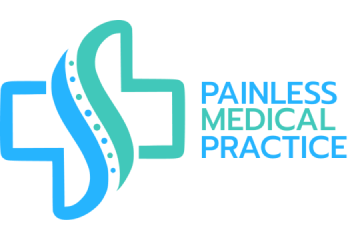Epidural Injection

What is a Epidural Injection?
An epidural injection is a procedure where medication, typically a steroid and sometimes an anesthetic, is injected into the epidural space around the spinal cord. This helps reduce inflammation and ease pain caused by conditions like herniated discs, spinal stenosis, or sciatica.
How Do Epidural Injections Work?
Epidural injections work by delivering medication directly into the space around the spinal cord, called the epidural space. These injections usually contain a steroid to reduce inflammation and sometimes an anesthetic for immediate pain relief. This helps calm irritated nerves, offering relief from conditions like herniated discs, spinal stenosis, or sciatica.
People commonly receive epidural injections for pain related to their lower back, but they can also be used for neck and mid-back pain. Epidural spine injections can provide long-lasting relief and are often part of a pain management plan.


Available Types of Epidural Injections
There are several types of epidural for back pain injections, each to treat different areas of the spine and specific pain conditions. These injections are used to manage pain in the cervical, thoracic, or lumbar regions, depending on where the pain originates. The type of epidural chosen depends on the patient’s condition and where the medication needs to be delivered for the most effective relief.
Transforaminal Epidural Injection Details
A transforaminal epidural injection is a procedure where anti-inflammatory medication is injected into the space around the nerves exiting the spinal column (the foramen). This injection is typically given in the lumbar (lower back) or cervical (neck) regions to help treat conditions like sciatica, herniated discs, or spinal stenosis. By delivering medication directly to the irritated nerve, it reduces pain, inflammation, and swelling.
Caudal Epidural Injection Details
A caudal epidural injection is an injection of corticosteroids into the lower part of the spinal canal, near the sacrum (tailbone area). It is used to treat lower back pain, leg pain, and sciatica caused by conditions such as herniated discs, spinal stenosis, or nerve inflammation. The medication helps reduce inflammation around the nerves, relieving pressure and pain. This type of epidural is commonly used when pain radiates down the legs or when other treatments haven’t provided enough relief.
Interlaminar Epidural Injection Details
An interlaminar epidural injection delivers anti-inflammatory medication into the space between the vertebrae in the spine, targeting the area around the spinal cord and nerve roots. It is typically administered in the lower back or neck to treat conditions like herniated discs, spinal stenosis, or sciatica. The goal is to reduce inflammation, ease nerve pressure, and provide pain relief.cal anesthetic and a corticosteroid directly into the joint space. This treatment is often used for conditions like arthritis, frozen shoulder, or rotator cuff injuries. The injection helps reduce inflammation, providing pain relief and boosting mobility. Ultrasound or X-ray guidance is typically used for better accuracy.
Epidural Injection for Back Pain Details
An epidural shot for back pain delivers anti-inflammatory steroids directly into the epidural space of the spine, which is located just outside the spinal cord’s protective covering. It’s typically administered in the lumbar (lower back) region to treat conditions like herniated discs, sciatica, or spinal stenosis. The injection reduces inflammation around irritated nerves, providing pain relief and better mobility. It’s an option for managing chronic pain when other treatments, such as medication or physical therapy, haven’t provided enough relief.
Epidural Neck Injection Details
An epidural injection for neck pain targets the cervical region of the spine. Administered in the epidural space around the spinal cord, it delivers anti-inflammatory steroids to reduce inflammation and swelling of nerves. This injection is commonly used to treat neck pain, arm pain, or conditions like herniated discs, cervical radiculopathy, or spinal stenosis. The treatment aims to ease pain, numbness, or tingling caused by compressed or irritated nerves.
Cervical Epidural Injection Details
A cervical epidural injection is a procedure in which steroids are injected into the epidural space of the cervical spine. It helps reduce inflammation around the spinal nerves and is used to treat conditions like herniated discs, cervical radiculopathy, or spinal stenosis. The injection is typically administered at the neck area and is designed to ease neck, shoulder, and arm pain by reducing nerve pressure.
Lumbar Epidural Injection Details
A lumbar epidural injection delivers a corticosteroid into the epidural space of the lower spine. It aims to reduce inflammation and ease pain in the lumbar region, targeting conditions like herniated discs, spinal stenosis, or sciatica. The injection is typically administered using imaging guidance. It helps ease pain that radiates down the legs, boosting mobility and providing relief that can last from weeks to months.
Thoracic Epidural Injection Details
A thoracic epidural injection is administered into the epidural space of the mid-back (thoracic spine) to reduce inflammation and pain. It involves injecting a corticosteroid and sometimes a local anesthetic into this region. This procedure is used to treat conditions like thoracic disc herniation, spinal stenosis, or nerve pain that radiates around the chest or abdomen. Guided by imaging for precision, it can provide significant relief from chronic pain.
Epidural Injection Procedure Details
Here’s a step-by-step overview of an epidural procedure:
- Preparation. At the pain management clinic, you’ll change into a medical gown and lie face down on a table. The injection area is thoroughly cleaned to reduce infection risk.
- Local Anesthesia. A small needle is used to numb the injection site, making the procedure painless.
- Guided Placement. Using fluoroscopy (X-ray) or other imaging, the doctor guides the epidural needle precisely into the epidural space.
- Contrast Injection. A contrast dye may be used to ensure proper needle placement.
- Medication Injection. The steroid medication, often combined with a local anesthetic, is slowly injected into the epidural space to reduce inflammation and provide pain relief.
- Aftercare. Once the epidural steroid injection is complete, pressure is applied to prevent bleeding, and the area is cleaned again. You’ll rest for a short time to monitor any reactions before being discharged.
Spinal injections help to manage pain by targeting inflamed nerves and is commonly used for conditions like herniated discs or sciatica.

What Are the Benefits of Epidural Injections?
- Provides targeted relief for chronic back, neck, or leg pain by reducing inflammation around the spinal nerves.
- Often works faster than oral medications, offering quicker relief for acute pain flare-ups.
- Non-surgical procedure that requires only a small injection, reducing recovery time and risk compared to surgery.
- By reducing pain, epidural injections can help improve daily function and range of motion.
- Many patients experience relief lasting weeks to months, helping manage chronic pain effectively.
- Pain relief from injections can make it easier to engage in physical therapy, improving overall treatment outcomes.
- Generally well-tolerated with fewer side effects than long-term oral pain medications.
What Are the Side Effects of Epidural Injections?
- Temporary increase in pain before the steroid starts working.
- Headache, especially if spinal fluid is unintentionally leaked.
- Numbness or weakness in the legs, which is typically short-lived.
- Allergic reaction to the medications used in the injection.
- Leg or back muscle spasms, which may occur as the body reacts to the injection.
- Dizziness or lightheadedness.
- Elevated blood sugar levels, particularly in people with diabetes.
- Tenderness or bruising at the injection site.
- Infection risk at the injection site, though this is rare.
- Bleeding and epidural hematoma are extremely rare, occurring mostly in patients with bleeding disorders or those who have not stopped taking blood thinner medications.
for your pain needs
Choose Painless Medical Practice for Epidural Injection in Chicago, IL
Looking for effective relief in Chicago? Choose Painless Medical Practice for all your epidural steroid injection needs. Led by Dr. Jaroslav Tymouch, our clinic provides expert care with a fully personalized approach. We specialize in epidural spinal injection techniques, including epidural injections for spinal stenosis, targeting pain at its source to reduce inflammation and boost your mobility. We also offer advanced treatments like viscosupplementation for joint relief, so you have a range of non-surgical options.
We treat both acute and chronic pain using the most modern methods, including X-ray-guided injections like neck, thoracic, and lower back facet joints, medial branch blocks, epidural injection, and more. We combine medications, physical therapy, stemwave therapy, and laser therapy to provide most effective care. Are you in need of a long-lasting relief? Contact us today to schedule your consultation to find a pain-free life!

Our Insurance Partners









FAQs About Epidural Injection
What Is an Epidural Injection?
An epidural injection is a procedure where medication, typically a steroid, is injected into the epidural space of the spine. This injection helps to reduce inflammation and relieve pain by targeting nerves that are irritated or compressed. Epidural injections are often used to treat conditions like sciatica, herniated discs, spinal stenosis, and other spine-related pain issues.
What Is Epidural Injection Used For?
Epidural injections are primarily used to treat pain caused by inflammation in the spine. This includes conditions like herniated discs, spinal stenosis, sciatica, and degenerative disc disease. The injection reduces inflammation and alleviates pain in the lower back, neck, or legs, improving mobility and quality of life.
Who Gives Epidural Injections?
Epidural injections are usually administered by healthcare professionals trained in pain management, such as anesthesiologists, pain management specialists, or orthopedic doctors. These professionals have expertise in delivering the injection precisely to the epidural space to ensure the best results and minimize risks.
How Many Epidural Steroid Injections Are Safe in a Lifetime?
The safety and frequency of epidural steroid injections depend on your specific condition and health profile. Typically, doctors recommend no more than 3-4 injections per year to minimize the risk of side effects. Your healthcare provider will assess your condition and determine the best treatment plan.
How Long Do Epidural Injections Last for Back Pain?
The duration of pain relief from an epidural injection can vary. Some patients experience relief for weeks, while others may benefit for several months. The effects depend on the severity of the condition, the individual’s response to treatment, and other factors such as overall health.
What Not to Take Before an Epidural Injection?
Before receiving an epidural injection, you may be advised to avoid certain medications, particularly blood thinners like aspirin, ibuprofen, or anticoagulants, as these can increase the risk of bleeding during the procedure. Always consult your doctor about any medications or supplements you’re taking before your injection.
What People Say About Epidural Injection
our services before

Dr. Tymouch took the time to carefully explain everything, answer my questions, and made me feel completely at ease throughout the entire visit. He treated my knee pain with injections, and the results were truly amazing and fast. I happy that I will be able to enjoy my vacation without discomfort. I’m so grateful for his care and highly recommend Dr. Tymouch to anyone in need of expert, compassionate treatment.
The team is professional, compassionate, and highly skilled at managing different types of pain.

